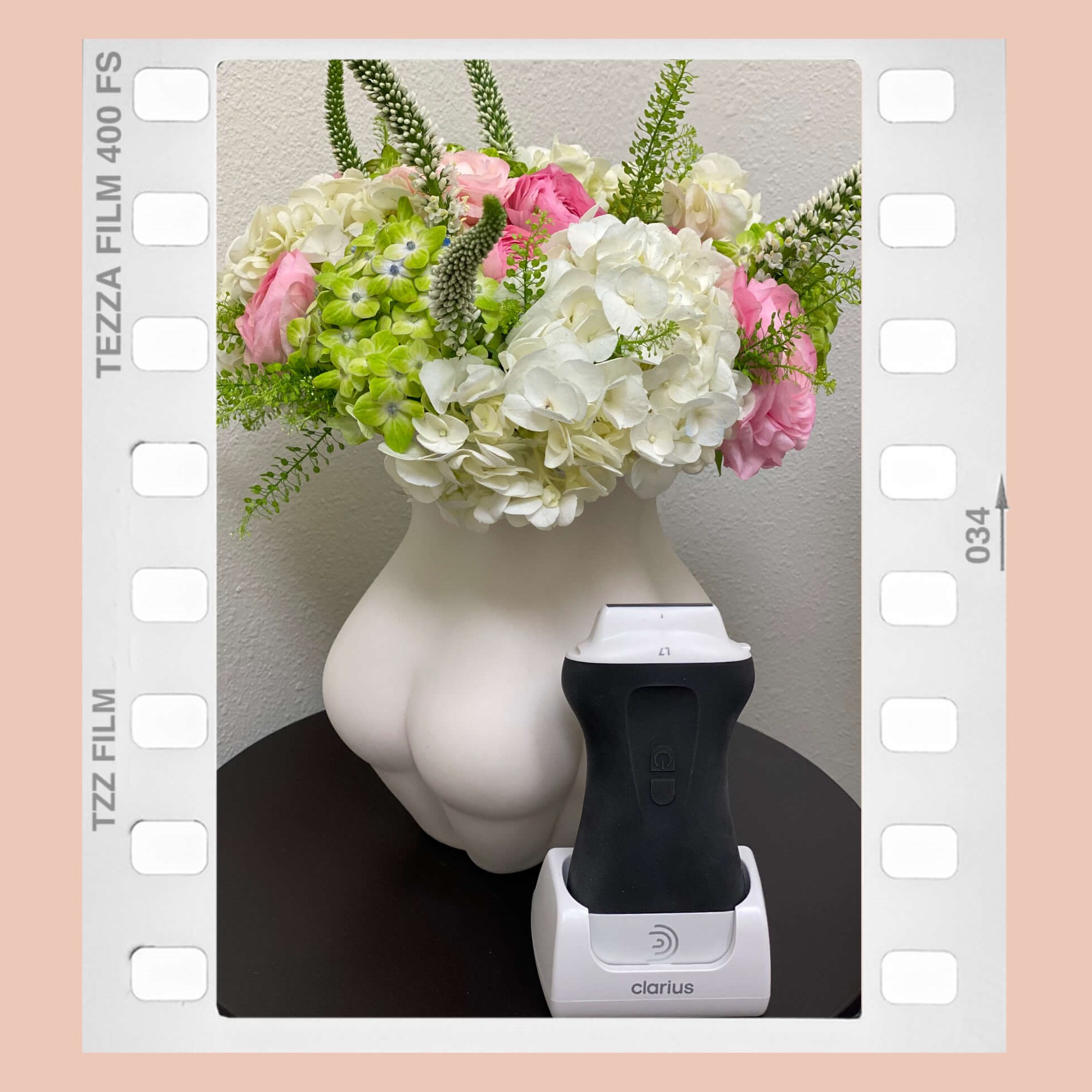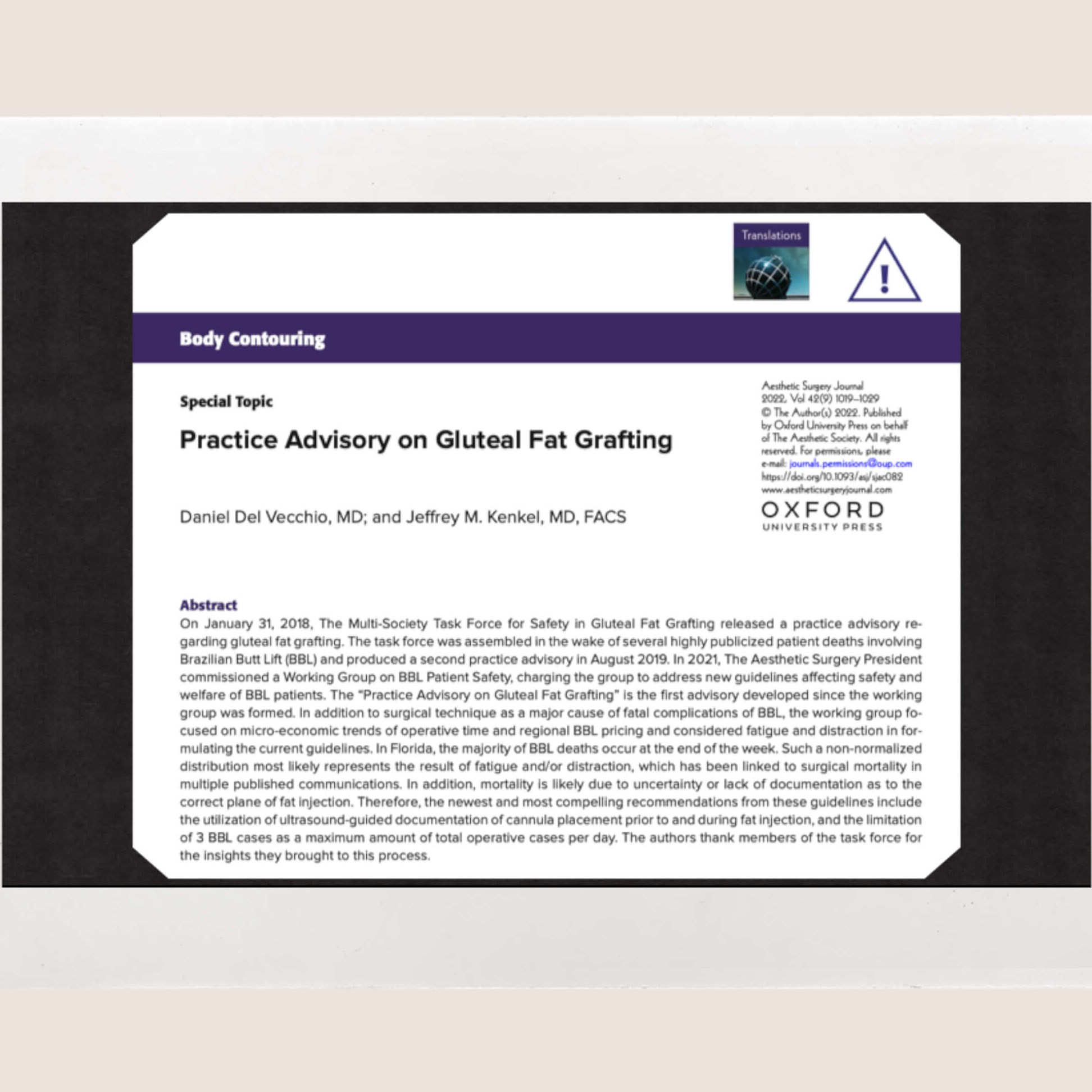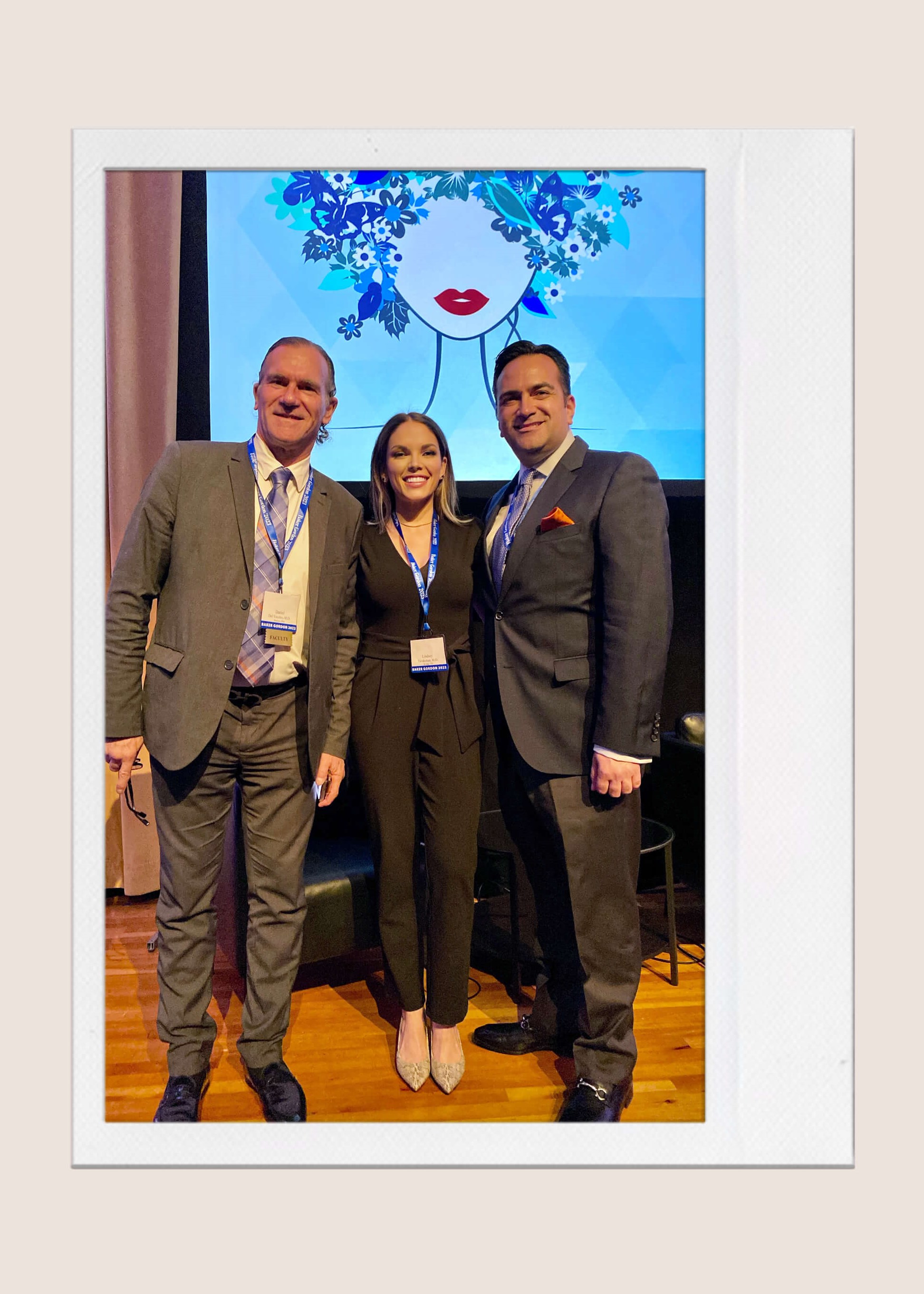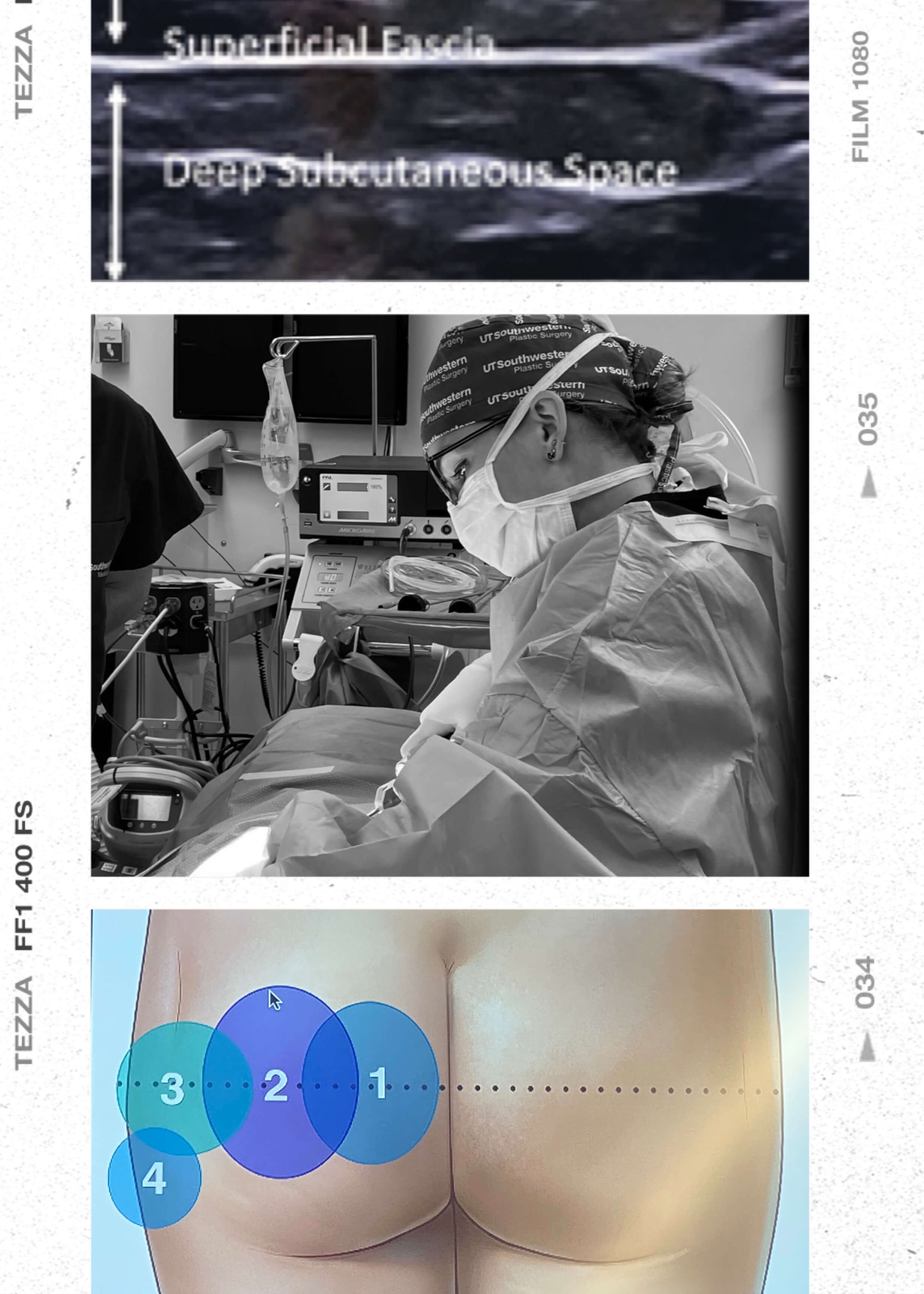Ultrasound Guided Brazilian Butt Lift (BBL)
8/28/2023
If you had asked me 5 years ago what plastic surgery procedure I would never offer, I would have answered without pause “a BBL”. This changed for me last year because of an enormous amount of research done by my mentors that integrated ultrasound technology with BBL surgery and made it safe.
&srotate=0)
BBL’s have been referenced as the “most deadly plastic surgery” and for good reason. The procedure involves fat harvest through traditional liposuction followed by transfer of that fat into the buttock. The danger in the procedure is the risk of fat entering into the blood vessels deep in the buttock and traveling in the venous system that returns to the heart and lungs. The result is a fat embolism that can stop the heart and/or lungs resulting in death. Now you understand why I never thought I would perform a BBL. There is no cosmetic surgery that is worth the risk of dying.
In 2017 the Aesthetic Surgery Education and Research Foundation (ASERF) formed a task force to investigate this problem, properly define the mortality rate, and to discuss a ban on BBLs. If you read my newsletter last week, this is the same research foundation that formed a task for to investigate Breast Implant Illness. In 2017 ASERF reported an estimated annual BBL mortality rate of one in 3448 cases. In Florida, 92% of the BBL deaths caused by fatty embolus occurred in strip mall, high-volume budget clinics. These clinics perform a large number of BBLs per day with surgeon oversight, however the liposuction and possibly fat transfer is often performed by assistants (employees that are not surgeons). Horrifying, I know.
&srotate=0)
Over the last 6 years my mentors collaborated on the ASERF task force and found a solution to reduce the unacceptable risk associated with BBL surgery. The work done on this project involved autopsies in Miami, cadaver studies at UTSouthwestern, and close work with the Florida Medical Board (because of the focus of BBL supply and demand in FL). This research confirmed that if fat is transferred into the correct tissue layer in the buttock there is no longer a high risk for fat entering the large vessels deep within the buttock. The question remained, how do you ensure that you are injecting in the right tissue plane?
The solution to this problem was found in a technology that is used routinely in the medical field, the ultrasound. The Ultra BBL, described by Dr. Pat Pazmiño, uses an ultrasound device to identify the superficial fat, deep fat, and muscle layers of the buttock. With eyes on the ultrasound monitor the surgeon can confirm the correct position of the fat transfer cannula and inject the fat graft into the deep subcutaneous layer. This simple solution was revolutionary in changing the safety profile of BBL surgery. Through my mentors’ work on ASERF and their collaboration with the Florida Medical Board it is now illegal to perform BBL surgery without ultrasound guidance.
&srotate=0)
Drs. Dan Del Vecchio, Lindsey Tavakolian, and Pat Pazmino
I am fortunate that through my residency program I had access to and trained with the pioneers of the Ultra BBL, Drs. Pat Pazmiño and Dan DelVecchio. I am proud to say that I was the first UTSouthwestern resident to perform an Ultrasound guided BBL during my plastic surgery residency. This was a historic moment at UTSouthwestern made possible when Dr. Kenkel lifted the moratorium on BBLs. The amount of work that went into this ASERF task force is a representation of how committed our plastic surgery societies are to the safety and integrity of our work.
&srotate=0)
Dr. Tavakolian uses an ultrasound to ensure that her cannula is in the deep subcutaneous space of the buttock before transferring fat for gluteal augm
With any surgery, risks still exist and not everyone is a good candidate for BBL surgery. In my practice I use BBL surgery as a tool to balance a woman’s physique, not create a disproportionate contour. The mainstream BBL aesthetic is not one that I share, but in the right patient who has poor buttock projection it can make a very nice change. My goal is to give you a contour that a stranger would not realize is surgical, but when comparing before & after photos is a powerful change.
My approach to all aesthetic surgery is balance and restoration towards what the eye interprets as normal and aesthetically pleasing. I am so pleased with the efforts of our plastic surgery societies to make BBL surgery safe. I am now confident that equipped with my ultrasound I can safely perform this procedure on patients that are properly indicated.
Here’s to choosing how we age, on our own terms!
Dr. Lindsey Tavakolian, MD